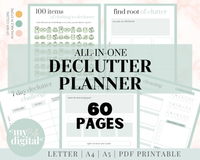The 10 rules for decluttering clothes home organizers always follow
These 10 clothes decluttering rules make the tedious decision process that little bit easier
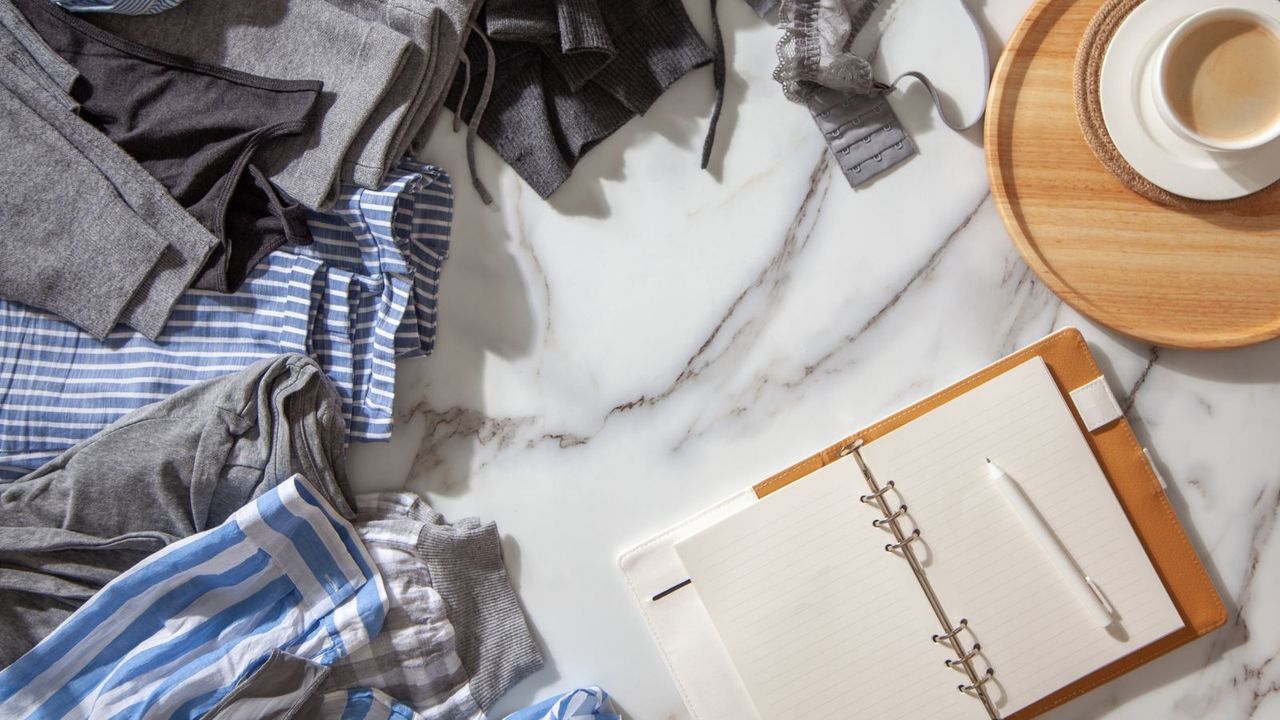
- 1. Avoid making rash decisions
- 2. Get rid of items with negative associations
- 3. Be ruthless with impractical pieces
- 4. Dispose of stained items
- 5. Remove duplicates
- 6. Be honest about gifts you’ve never resonated with
- 7. Remove clothes that wash you out
- 8. Keep it if it holds sentimental value
- 9. Be realistic about what you can fix or adjust
- 10. Don’t be hasty when dealing with non-trendy pieces
- FAQs

Closets are the area of our homes that need the most frequent clear-outs, and they are often seen as the most stressful spots to tackle.
Luckily, professional home organizers have developed their own rule book for decluttering clothes that makes the process a little smoother and can help you visualize your end goal before you start pulling apart your wardrobe.
Here are the 10 rules for decluttering clothes organizers like to follow, and how to use them at home.
10 rules for decluttering clothes
There are plenty of decluttering tips for getting rid of clothing and accessories, but the best approach is to set some rules, write them down to help you visualize them if it helps, and stick to them the best you can, holding yourself accountable as you work.
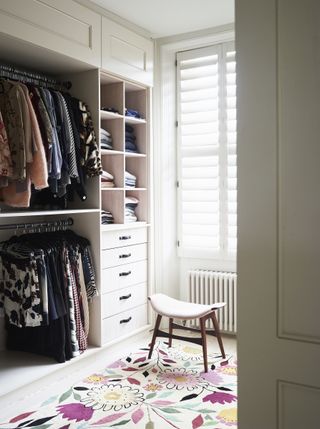
1. Avoid making rash decisions
Although most closet decluttering tips involve making quick decisions about getting rid of things you haven’t worn recently, a better rule is to avoid making rash decisions – this can help avoid decluttering regret in the long run, Marine Andre, home organizer and CSR expert at En Route to Joy says.
‘I don't advise making rational decisions when it comes to decluttering – it would be a shame to discard clothes you absolutely love simply because you don't wear them. It's much better to remove the clothes you don't like, even if you wear them often because they are right in front of you when you open your wardrobe.
‘The ultimate objective is to feel a spark of joy each time you open your wardrobe. Clothes are your second skin, so understanding your emotions when you wear them is crucial.’
2. Get rid of items with negative associations
Arguably one of the most important rules to follow when decluttering clothes is to let go of pieces that actively make you feel bad. Maybe it was expensive, but you don't wear it, you do not like the texture of it, or perhaps it simply does not fit, says Bonnie Borromeo Tomlinson, professional organizer and author of Stop Buying Bins, available at Amazon.
‘If it doesn't fit, get rid of it. Not could it fit or will it fit, but does it fit? If the answer is no, it's got to go! Nothing, not cost, quality, or special occasion worn, supersedes fit.
‘Now from the pile that's left, ask yourself the following questions: Does it fit well? Is it attractive to you? Is it in good condition? Do you like it? Do you have any use for it? Keep only those items you can answer yes to.’
3. Be ruthless with impractical pieces
Sometimes we may love a piece, but find it incredibly impractical to wear on an average day. It could be a pair of killer heels, boots that rub your ankles, see-through garments that always make you a little uncomfortable, and so on. If you don’t reach for them because they end up feeling like a chore, it is probably best to let them go – especially if you are already trying to organize a small closet with lots of clothes.
4. Dispose of stained items
Anything stained, ripped, misshapen, or discolored needs to be taken out of your closet and thrown away, advises Millie Hurst, Solved section editor at Homes & Gardens.
‘If you have not managed to repair the garment when doing laundry in the past, you aren't likely to restore it to its original condition in the future, and it is only taking up precious space in your closet ‘ she warns. ‘Get rid of them, or relegate them to using them when you are cleaning or doing DIY around the home – but only keep one set, not multiple that will take up space elsewhere.’

Millie Hurst is Section Editor at Homes & Gardens, overseeing the Solved section, which provides readers with practical advice for their homes. Millie has written about and tried out countless cleaning and DIY hacks in the six years since she became a journalist, and has worked in both London and New York.
5. Remove duplicates
Duplicates of some clothing can sometimes be useful to keep a hold of, such as staple basics like white tees, leggings, or pairs of jeans, but more often than not duplicates are surplus to requirement – especially when you have a higher quality duplicate that you use more, says Melissa Fiorentino, personal stylist and trends forecaster at Editors Faves, a sustainable fashion blog.
‘Just remember that while it's good to have basics, having more than two or three of similar everyday items just takes up unnecessary space in your closet.’
6. Be honest about gifts you’ve never resonated with
Gifts occupy a complicated sphere in decluttering and home organization, as we can feel bad about parting ways with something someone else picked for us. But if you don't resonate with it, it can be an anchor for guilt or simply a waste of space, says Jennifer Ebert, deputy editor (digital) for Homes & Gardens.
'Try to be honest with yourself, if you do not wear it but appreciate the sentimental value of the gift, take a photo and store it in a memory book or folder, then donate the item to let it find a new home that will use it.'

Jen is the Deputy Editor (Digital) of Homes & Gardens online. Before starting this position, she had completed various interior design courses at KLC Design School, as well as working across Ideal Home, LivingEtc, 25 Beautiful Homes and Country Homes & Interiors as an interiors writer.
7. Remove clothes that wash you out
It is not just clothes that don't fit that should be gotten rid of, but clothes that wash you out, too. If you have been on the internet in any capacity as of late, then you may have become familiar with the concept of color analysis – a process where you discover which groups of colors go best with the undertones of your skin (a little like finding the best undertones of white paint to use in your home).
You should look at the clothing next to your skin and decide if it really makes you glow, or makes you look a little flat, suggests Scarlett De Bease, personal stylist and founder of Scarlett Image Consulting.
‘An organized closet is a guarantee when my clients only keep in their main closet the clothes that currently fit them, are in their most flattering colors and styles, and can be combined in multiple ways. Once someone sees how great they look in the perfect clothes for them, they won't be able to wait to get rid of those that are not.’
8. Keep it if it holds sentimental value
If you are struggling to declutter sentimental items, then it is entirely possible to keep a hold of them, especially if they are from a major event in your life, such as a wedding dress or suit. It might just be better to store them in underbed storage or an area that's harder to reach day to day so it doesn't take up valuable space.
‘To make extra space in your closet, remove any clothing that you consider to be memorabilia such as favorite concert t-shirts that you don’t wear,’ suggests Jill Viglione, certified professional organizer, and founder of Embrace Your Space. ‘Either limit the clothing to one bin for long-term clothes storage or take a photo of each item and donate them.
‘Removing memorabilia, clothing, and sentimental pieces from your closet leaves room for what you wear regularly – items will be easier to find, relevant to your current style, and hang better too.’

Jill Viglione, (CPO®) is a Certified Professional Organizer and founder of Embrace Your Space Organizing in Portland, Oregon. Jill helps empower busy individuals to find the hidden beauty in their spaces and get simply organized to live better lives. She has over 11 years of space planning experience, too.
9. Be realistic about what you can fix or adjust
When dealing with well-loved clothing pieces that may have sprung a small hole or had some threads come loose, try to be realistic about what you can and will fix, and what you won’t. Fixing your clothes is a great way to be sustainable at home, but this only works if you actually do it.
A great way to decide if you will get the task done is to set your clothes aside in a separate bag, says Melisa Fiorentino, personal stylist. ‘If you don't wear them or fix them within the next four months, then you can likely donate or get rid of the pieces without regretting it.’
10. Don’t be hasty when dealing with non-trendy pieces
Just as interior designer trends should influence your taste but never dictate it, fashion trends should never dictate what you have in your closet. Just because something has fallen out of vogue, doesn't mean you have to take it out of your collection, says Millie Hurst, Solved section editor.
‘Just because something isn't trendy anymore doesn't mean you can enjoy it. Trends can be incredibly fickle at times, so follow your gut and work with what brings you joy or makes you most comfortable, not what other people think you should be wearing. Being unique and being sustainable is trendy in and of itself nowadays.’
All-in-One Declutter Planner | $3.92 at Etsy
This printable decluttering planner is all you need to help tackle your home's mess without missing a step. It is perfect for both keeping on top of your belongings and starting off on your first big clearout.
FAQs
How many clothes are too many?
It is hard to tell what ‘too many’ clothes classes as, as it can depend on how often you wear your clothing, and how big your clothes storage is. If you have a whole dressing room, then too many clothes will be very different from if you have a single small closet. It may be that ‘too many’ clothes are when you struggle to fit all of your garments into your storage, no matter their size, or it might be when you have so many options that you struggle to find what you should wear, resulting in decision fatigue.
How do you declutter clothes when you want to keep everything?
If you are seriously struggling to get rid of clothes, even those that don't fit you, then it may be a good idea to ask for help from an honest but supportive friend or family member, or even a professional home organizer who can offer a unique outsider perspective on pieces and support you through the process of decluttering when you feel overwhelmed. There is no shame in asking for help, that is what the pros are there for after all!
Following these rules for decluttering clothes is a great way to make sure your precious garments will not end up as home items you'll regret throwing away, and can help you to set yourself boundaries going into decluttering, so you are not left wondering 'what if' while trying to cut back your collection.
Will you be putting them into practice?
Sign up to the Homes & Gardens newsletter
Design expertise in your inbox – from inspiring decorating ideas and beautiful celebrity homes to practical gardening advice and shopping round-ups.

Chiana has been at Homes & Gardens for two years and is our resident 'queen' of non-toxic living. She spends most of her time producing content for the Solved section of the website, helping readers get the most out of their homes through clever decluttering, cleaning, and tidying tips. She was named one of Fixr's top home improvement journalists in 2024.
-
 Joanna Gaines' Hillcrest Cottage is a lesson in making the most out of a small space – take a tour to see how she brings her iconic style to this tiny rental property
Joanna Gaines' Hillcrest Cottage is a lesson in making the most out of a small space – take a tour to see how she brings her iconic style to this tiny rental propertyCombining her signature rustic style with a contemporary palette, Joanna makes this tiny cottage feel bright and airy
By Eleanor Richardson Published
-
 5 things to avoid buying at IKEA – and where to get them instead
5 things to avoid buying at IKEA – and where to get them insteadIKEA is a wonderful resource for affordable, on-trend home decor, but there are a few things this design editor would never buy
By Pip Rich Published
-
 6 ways to prevent mold and damp in bedrooms – expert solutions to maintain a safe sleep environment
6 ways to prevent mold and damp in bedrooms – expert solutions to maintain a safe sleep environmentDon't sleep on these six tips, experts urge
By Seraphina Di Mizzurati Published
-
 I tried the easy Reverse Advent Calendar decluttering method to clear out my home before Christmas – it's brilliant if overwhelm usually gets in your way
I tried the easy Reverse Advent Calendar decluttering method to clear out my home before Christmas – it's brilliant if overwhelm usually gets in your wayIt left my home feeling lighter with minimal effort
By Ciéra Cree Published
-
 I tried the one-in-one-out method to keep my space clutter-free and it changed my relationship with shopping for good
I tried the one-in-one-out method to keep my space clutter-free and it changed my relationship with shopping for goodI added a few caveats that made the rule work better for me
By Ciéra Cree Published
-
 8 things you should never store in a playroom and where to put them instead
8 things you should never store in a playroom and where to put them insteadRead our top tips on how to keep your playroom organized and fun at the same time
By Sophie Warren-Smith Published
-
 7 fall home maintenance tips experts never skip in their own properties
7 fall home maintenance tips experts never skip in their own propertiesSeven pro steps to maintain your home this fall
By Andy van Terheyden Published
-
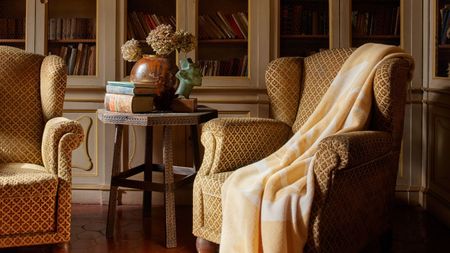 I’m in chronic pain and have used heating pads for 15 years to cope at home in cold weather – the best I've ever used is on sale for Amazon Prime's last day of deals
I’m in chronic pain and have used heating pads for 15 years to cope at home in cold weather – the best I've ever used is on sale for Amazon Prime's last day of dealsI've used more than 30 electric heating pads and they're my go-to for pain relief
By Punteha van Terheyden Published
-
 A professional organizer's best seasonal storage tips for living rooms – they're the key to having easy access, reduced clutter and improved functionality
A professional organizer's best seasonal storage tips for living rooms – they're the key to having easy access, reduced clutter and improved functionalityWelcome in the new season with stylish storage tips for fall
By Ottilie Blackhall Published
-
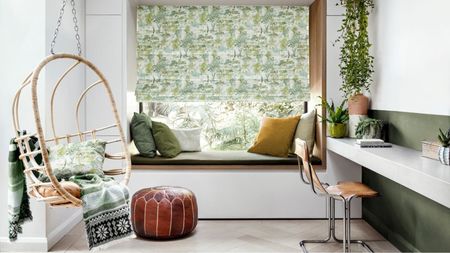 How to elevate your teen's former bedroom into a beautiful home office
How to elevate your teen's former bedroom into a beautiful home officeTips and advice from an interior designer and a professional organizer on how to transition your teen's bedroom into a home office
By Ashley Chalmers Published
